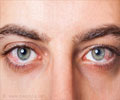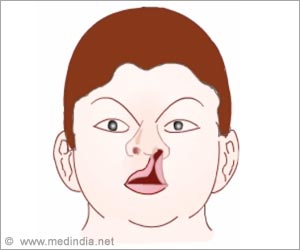Retinal dystrophy is a group of genetic eye disorders causing progressive vision loss due to retinal degeneration.

Gene therapy in children with AIPL1-associated severe retinal dystrophy: an open-label, first-in-human interventional study
Go to source).
Gene Therapy for AIPL1-Related Retinal Dystrophy
The children were born with a severe impairment to their sight due to a rare genetic deficiency that affects the AIPL1 gene. The condition, a form of retinal dystrophy, means those affected are born with only sufficient sight to distinguish between light and darkness. The gene defect causes the retinal cells to malfunction and die, with children affected being legally certified as blind from birth. The new treatment is designed to enable the retinal cells to work better and to survive longer.‘Hope for #visionloss! #Genetherapy shows promise in treating retinal dystrophy, offering potential for improved sight. #blindness’





The procedure, developed by UCL scientists, consists of injecting healthy copies of the gene into the retina, at the back of the eye through keyhole surgery. These copies are contained inside a harmless virus, so can penetrate the retinal cells and replace the defective gene.The condition is very rare, and the first children identified were from overseas. To mitigate any potential safety issues, the first four children received this novel therapy in one eye only. All four saw remarkable improvements in the treated eye over the following three to four years, but lost sight in their untreated eye.
The outcomes of the new treatment, reported in The Lancet, show that gene therapy at an early age can dramatically improve sight for children with this condition – one that is rare and particularly severe. Successful gene therapy for another form of genetic blindness (RPE65 deficiency) has been available on the NHS since 2020. These new findings offer hope that children affected by both rare and more common forms of genetic blindness may in time also benefit from genetic medicine.
The team is now exploring the means to make this new treatment more widely available.
Professor James Bainbridge, professor of retinal studies at UCL Institute of Ophthalmology and consultant retinal surgeon at Moorfields Eye Hospital, said: "Sight impairment in young children has a devastating effect on their development. Treatment in infancy with this new genetic medicine can transform the lives of those most severely affected."
Advertisement
The parents of one of the children, Jace, from Connecticut, USA, shared details of their experience with the experimental treatment, which they were accepted for after Jace was diagnosed with an aggressive form of LCA (Leber Congenital Amaurosis).
Advertisement
Jace’s father Brendan concluded: “We are so grateful for this opportunity, and for the care he’s received. When first offered the chance to participate, we wanted to give him everything we could, for him to successfully navigate the world. We also understood the huge implications for future research, and how participating could help others. It has been a phenomenally positive experience, and the results are nothing short of spectacular.”
The treatment was developed and manufactured at UCL under a Manufacturer’s ‘Specials’ Licence (MSL) held by UCL. MeiraGTx supported production, storage, quality assurance and released and supplied it for treatment under the genetic medicine company’s MSL.
The procedure to administer the treatment to the affected children took place at Great Ormond Street Hospital. The children were assessed in the NIHR Moorfields Clinical Research Facility, and the NIHR Moorfields Biomedical Research Centre provided infrastructure for the research.
Professor Robin Ali, UCL Institute of Ophthalmology and King’s College London Centre for Gene Therapy and Regenerative Medicine, added: “This work demonstrates the importance of UK clinical academic centre manufacturing facilities and MHRA (UK Medicines and Healthcare products Regulatory Agency) MSLs in making advanced therapies available to people with rare conditions.” The work was partially funded by the National Institute for Health and Care Research (NIHR), MeiraGTx and Moorfields Eye Charity, thanks to the generosity of donors. Moorfields Eye Charity has also supported Professor Bainbridge’s work, enabling the expansion of this programme of experimental medicine including the initiation of gene therapy trials.
Reference:
- Gene therapy in children with AIPL1-associated severe retinal dystrophy: an open-label, first-in-human interventional study - (https://www.thelancet.com/journals/lancet/article/PIIS0140-6736(24)02812-5/fulltext)
Source-Eurekalert










